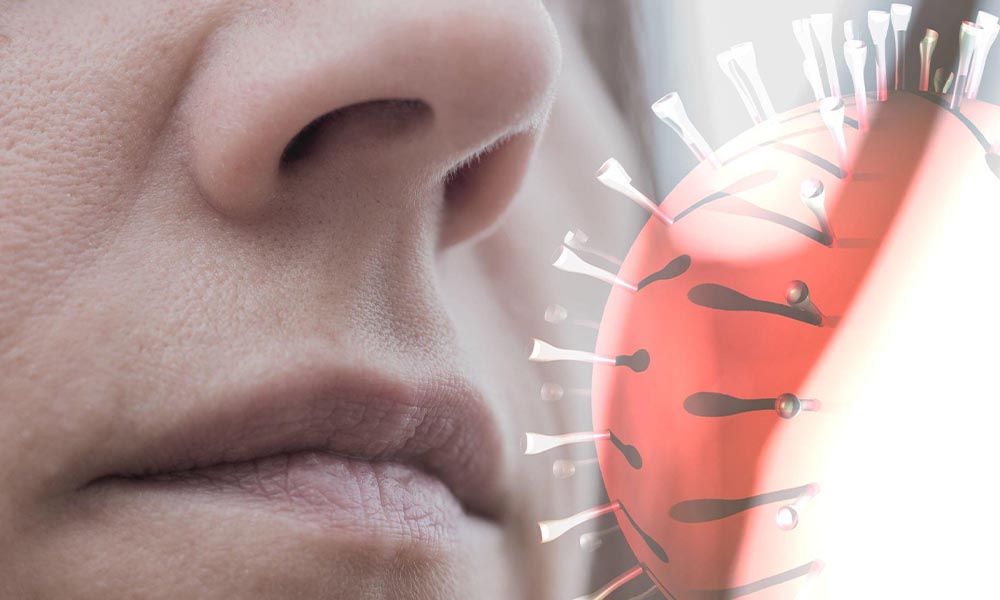The Rhino Virus, also known as the common cold, is a viral infection that affects the upper respiratory system. It is one of the most common illnesses that humans experience, especially during the colder months. The Rhino Virus is highly contagious and can spread easily from person to person. In this article, we will explore the causes, symptoms, and prevention strategies for the Rhino Virus, as well as tips for managing and recovering from it.
Table of Contents
ToggleWhat is the Rhino Virus?
The Rhino Virus is a type of virus that belongs to the family of viruses called picornaviruses. There are over 100 different types of Rhino Viruses, which is why it is so difficult to develop a vaccine or cure for this virus. The Rhino Virus primarily affects the nose and throat, causing symptoms such as sneezing, runny nose, sore throat, and coughing. It can also lead to more severe symptoms in individuals with weakened immune systems or underlying health conditions.
Causes of the Rhino Virus
The Rhino Virus is primarily spread through droplets in the air when an infected person coughs or sneezes. These droplets can then be inhaled by others, leading to infection. The virus can also be spread by touching contaminated surfaces and then touching the face, particularly the nose and mouth. The Rhino Virus is most common during the colder months, as people tend to spend more time indoors and in close proximity to others. Poor ventilation and crowded places can also increase the risk of transmission.
Spread and transmission of the Rhino Virus

The Rhino Virus is highly contagious and can easily spread from person to person. It can be transmitted through direct contact with an infected person, or through indirect contact with contaminated surfaces or objects. When an infected person coughs or sneezes, tiny droplets containing the virus are released into the air. These droplets can then be inhaled by others, leading to infection. The virus can also survive on surfaces for several hours, increasing the risk of transmission through touch.
Symptoms of the Rhino Virus
The symptoms of the Rhino Virus usually appear within one to three days after exposure to the virus. These symptoms can vary from mild to severe, depending on the individual and the specific strain of the virus. Common symptoms include sneezing, runny or stuffy nose, sore throat, coughing, mild headache, and low-grade fever. In some cases, individuals may also experience fatigue, body aches, and loss of appetite. It is important to note that the symptoms of the Rhino Virus can be similar to those of other respiratory infections, such as the flu or allergies.
Complications and risks associated with the Rhino Virus
While the Rhino Virus is generally a mild illness, it can lead to complications, especially in individuals with weakened immune systems or underlying health conditions. In some cases, the Rhino Virus can progress to a more severe respiratory infection, such as bronchitis or pneumonia. Children, older adults, and individuals with chronic respiratory conditions are particularly at risk for developing complications. It is important to seek medical attention if symptoms worsen or persist for more than a week, or if there are signs of difficulty breathing or chest pain.
Diagnosis and Treatment of the Rhino Virus

The diagnosis of the Rhino Virus is usually based on a physical examination and a review of symptoms. In some cases, a healthcare provider may recommend a laboratory test to confirm the presence of the virus. However, these tests are not commonly used, as they do not change the course of treatment. There is no specific treatment for the Rhino Virus, as it is a viral infection. Most cases resolve on their own within a week, with the symptoms being managed with over-the-counter medications for pain and congestion relief. It is important to rest, stay hydrated, and practice good hygiene to prevent the spread of the virus.
Prevention strategies for the Rhino Virus
Preventing the Rhino Virus involves practicing good hygiene and adopting healthy habits. Here are some strategies to reduce the risk of infection:
- Wash your hands frequently with soap and water for at least 20 seconds.
- Use hand sanitizer when soap and water are not available.
- Avoid close contact with individuals who are sick or showing symptoms of respiratory infections.
- Cover your mouth and nose with a tissue or your elbow when coughing or sneezing.
- Clean and disinfect frequently-touched surfaces, such as doorknobs, light switches, and electronic devices.
- Stay home when you are feeling unwell or have symptoms of a respiratory infection.
Tips for managing and recovering from the Rhino Virus
While there is no cure for the Rhino Virus, there are steps you can take to manage your symptoms and aid in your recovery:
- Get plenty of rest to allow your body to heal.
- Stay hydrated by drinking plenty of fluids, such as water, herbal tea, and clear broth.
- Use over-the-counter medications to relieve symptoms, such as pain relievers, decongestants, and cough suppressants.
- Use a humidifier or take steamy showers to help relieve congestion.
- Gargle with warm saltwater to soothe a sore throat.
- Eat a balanced diet rich in fruits, vegetables, and whole grains to support your immune system.
FAQ: Understanding the Rhino Virus
What is the Rhino Virus?
The Rhino Virus, also known as the common cold virus, is a highly contagious virus that infects the nose and throat. It is a member of the Enterovirus genus within the Picornaviridae family.
What are the Causes of Rhino Virus Infection?
Rhino Virus infections are primarily caused by close contact with an infected person. The virus can spread through droplets from coughs and sneezes, as well as by touching contaminated surfaces and then touching the face.
What are the Symptoms of a Rhino Virus Infection?
Symptoms of a Rhino Virus infection typically include a runny or stuffy nose, sneezing, sore throat, coughing, and mild fatigue. Some individuals may also experience a low-grade fever.
Is the Rhino Virus the same as the Influenza Virus (Flu)?
No, the Rhino Virus is not the same as the Influenza virus (flu). They are caused by different types of viruses, although some of their symptoms may overlap. The Rhino Virus usually causes milder respiratory symptoms compared to the flu.
How Long Does a Rhino Virus Infection Last?
A Rhino Virus infection typically lasts for about a week to ten days. Most people recover without complications, but some may experience lingering symptoms.
Can the Rhino Virus Cause Severe Illness?
While the Rhino Virus usually causes mild illness, it can lead to more severe symptoms, especially in individuals with weakened immune systems, infants, and the elderly. It can also exacerbate underlying respiratory conditions.
What Are Effective Prevention Strategies for Rhino Virus?
Prevention strategies include:
- Frequent handwashing with soap and water for at least 20 seconds.
- Using hand sanitizer with at least 60% alcohol when soap and water are not available.
- Avoiding close contact with infected individuals.
- Covering your mouth and nose with a tissue or your elbow when you cough or sneeze.
- Disinfecting frequently-touched surfaces regularly.
- Getting a flu vaccine to reduce the risk of concurrent infections.
Is There a Vaccine for the Rhino Virus?
No, there is no specific vaccine for the Rhino Virus due to its numerous strains. Vaccines exist for other respiratory viruses like the flu, but not for the common cold caused by Rhino Viruses.
Can Antibiotics Treat a Rhino Virus Infection?
No, antibiotics are not effective against viral infections, including the Rhino Virus. They are only prescribed for bacterial infections. Rest, hydration, and over-the-counter cold remedies can help alleviate symptoms.
Can You Get Reinfected with the Same Rhino Virus Strain?
It is possible to get reinfected with the same Rhino Virus strain since there are over 100 different types. Immunity to one strain does not necessarily protect against others.
When Should I Seek Medical Attention for a Rhino Virus Infection?
You should seek medical attention if you experience severe symptoms such as high fever, difficulty breathing, chest pain, or if your symptoms persist or worsen after several days. This is especially important for individuals with underlying health conditions.
Can Rhino Virus Infections Be Prevented in Children?
Preventing Rhino Virus infections in children involves teaching good hygiene practices, including handwashing, and ensuring they avoid close contact with infected individuals, especially during outbreaks in schools or daycare settings.
Is There a Seasonal Pattern to Rhino Virus Outbreaks?
Rhino Virus infections are more common in the fall and winter months, although they can occur at any time of the year. They often contribute to the “cold and flu season.”
Conclusion
The Rhino Virus, or common cold, is a highly contagious viral infection that affects the upper respiratory system. It is spread through droplets in the air or by touching contaminated surfaces. While the Rhino Virus is generally a mild illness, it can lead to complications in certain individuals. Prevention strategies include practicing good hygiene and adopting healthy habits, such as frequent handwashing and avoiding close contact with sick individuals. If you do get infected, managing your symptoms and taking care of your health can help you recover more quickly. Stay healthy and stay well!


